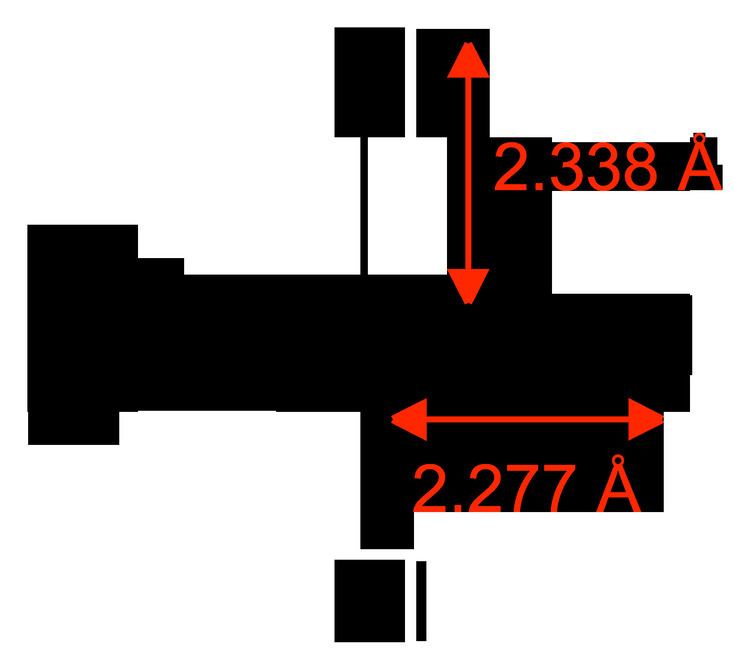Related compounds Molar mass 299.02 g/mol | Formula SbCl5 Density 2.34 g/cm³ | |
 | ||
Appearance colorless or reddish-yellow (fuming) liquid, oily | ||
Antimony pentachloride
Antimony pentachloride is a chemical compound with the formula SbCl5. It is a colourless oil, but typical samples are yellowish due to impurities. Owing to its tendency to hydrolyse to hydrochloric acid, SbCl5 is a highly corrosive substance and carbonizes non-fluorinated plastics.
Contents
Preparation and structure
Antimony pentachloride is prepared by passing chlorine gas into molten antimony trichloride:
SbCl3 + Cl2 → SbCl5Gaseous SbCl5 has a trigonal prismatic structure.
Reactions
Antimony pentachloride hydrolyses to give hydrochloric acid and antimony oxychlorides. This reaction is suppressed in the presence of a large excess of chloride, owing to the formation of the hexachloroantimonate complex ion:
SbCl5 + Cl− → [SbCl6]−The mono- and tetrahydrates are known, SbCl5·H2O SbCl5·4 H2O.
This compound forms adducts with many Lewis bases. It is used as the standard Lewis acid in the Gutmann scale of Lewis basicity.
It is also a strong oxidizing agent.
Applications
Antimony pentachloride is used as a polymerization catalyst and for the chlorination of organic compounds.
Precautions
Antimony pentachloride is a highly corrosive substance that should be stored away from heat and moisture. It is a chlorinating agent and, in the presence of moisture, it releases hydrogen chloride gas. Because of this, it may etch even stainless-steel tools (such as needles), if handled in a moist atmosphere. It should not be handled with non-fluorinated plastics (such as plastic syringes, plastic septa, or needles with plastic fittings), since it melts and carbonizes plastic materials.
